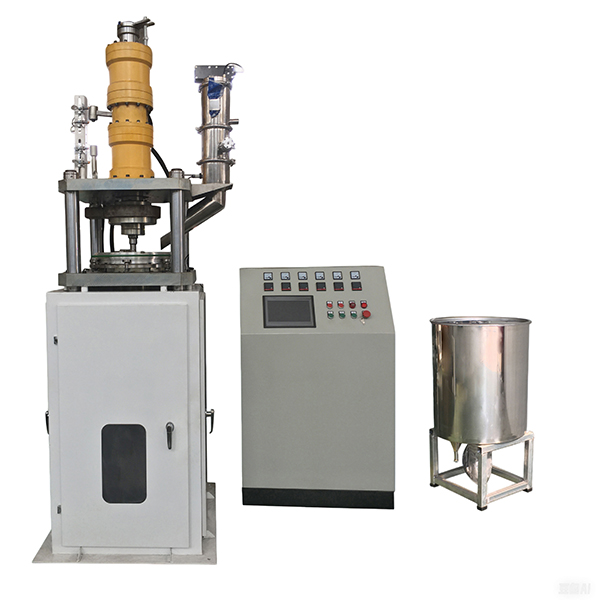1、Introduction: Key Applications and Custom PTFE Extrusion Solutions
PTFE (Polytetrafluoroethylene) RAM extruders are specialized machines for processing high-performance polymers. If you’re wondering “what materials work with PTFE RAM extruders?”, the answer spans pre-sintering virgin PTFE, filled compounds, and hybrid formulations. This article leverages industry data from the Fluoropolymer Manufacturing Association and technical case studies to explain material compatibility, while highlighting how Custom PTFE extrusion solutions address complex industrial requirements.
2、Core Material Categories for PTFE RAM Extrusion
1. Virgin PTFE and Its Variants
RAM extruders excel at processing these base materials:
|
Material Type |
Melt Temperature (°C) |
Key Properties |
Common Applications |
|
Granular PTFE |
360-380 |
High chemical resistance |
Seals, gaskets |
|
Fine Powder PTFE |
345-365 |
Superior tensile strength |
Wire insulation |
|
Pre-sintered PTFE |
325-350 |
Reduced post-processing needs |
Complex tubing shapes |
Source: ASTM D4894-20 Standard Specification for PTFE Granular Molding and RAM Extrusion Materials
Expert Insight:
Dr. Emily Rosen, a polymer engineer with 15+ years in fluoropolymer processing, notes: “Virgin PTFE requires precise RAM pressure control (typically 30-50 MPa) to avoid shear-induced degradation. Custom PTFE extrusion solutions often integrate real-time pressure sensors to optimize this.”
—
2. Filled PTFE Compounds
Additives enhance specific properties for demanding environments:
A. Mechanical Reinforcement Fillers
- **Glass Fiber (15-25% loading)**: Increases compressive strength by 200% (per ISO 12086-2 tests)
- **Carbon/Graphite (5-15%)**: Reduces friction coefficient to 0.1-0.2, ideal for bearing pads
B. Conductive Additives
- Bronze (20-40%): Thermal conductivity reaches 1.5 W/m·K vs 0.25 W/m·K for pure PTFE
- Carbon Nanotubes (3-8%): Achieve anti-static surface resistance <10^6 Ω
Case Study:
A Custom PTFE extrusion solutions provider helped a semiconductor client develop boron nitride-filled PTFE trays with 0.02ppm contamination levels, critical for wafer handling.
3. Hybrid and Emerging Materials
|
Material Blend |
Innovation Purpose |
RAM Extrusion Challenge |
|
PTFE-PEEK composites |
High-temperature stability |
Phase separation control |
|
PTFE with Nano-ceramics |
Radiation resistance |
Uniform dispersion monitoring |
|
Recycled PTFE blends |
Sustainability compliance |
Contaminant filtration systems |
3、Critical Technical Considerations
1. Temperature and Pressure Profiles
- Avoid Over-sintering: Exceeding 385°C causes molecular weight loss (verified via GPC analysis)
- RAM Force Calibration: 25-60 kN force range depending on die geometry
2. Tooling Design for Custom PTFE Extrusion Solutions
- Die Land Length: Minimum 8x diameter to ensure proper consolidation
- Surface Finish: <0.4 μm Ra reduces sticking in medical-grade tubing
4、FAQs: Addressing Practical Concerns
Q: Can PTFE RAM extruders process ultra-high-purity materials for pharma?
A: Yes, with electropolished barrels and ISO Class 5 cleanroom integration.
Q: How do Custom PTFE extrusion solutions reduce material waste?
A: Advanced systems reclaim 92-95% of scrap via closed-loop reprocessing.
Q: What’s the minimum batch size for specialty compounds?
A: Leading providers offer 50kg trial runs for R&D validation.
5、 Conclusion: Actionable Recommendations
1. Verify Material Certifications: Request ISO 10993 (biocompatibility) or UL 94 V-0 (flammability) reports
2. Partner with Custom PTFE Extrusion Solutions Experts: Prioritize suppliers with in-house rheology testing labs
3. Test Prototypes Early: 85% of extrusion failures stem from incorrect filler dispersion – conduct SEM analysis pre-production
Ready to optimize your PTFE components?
[Contact us] for a free material compatibility assessment today.
Post time: Feb-27-2025


